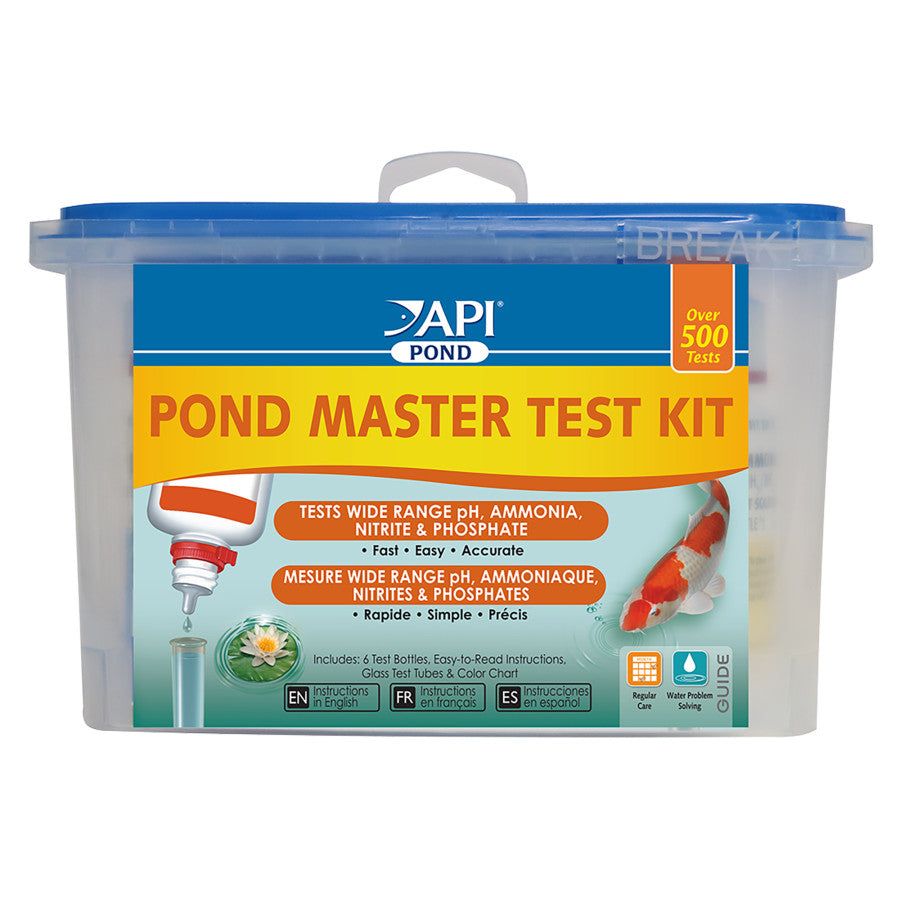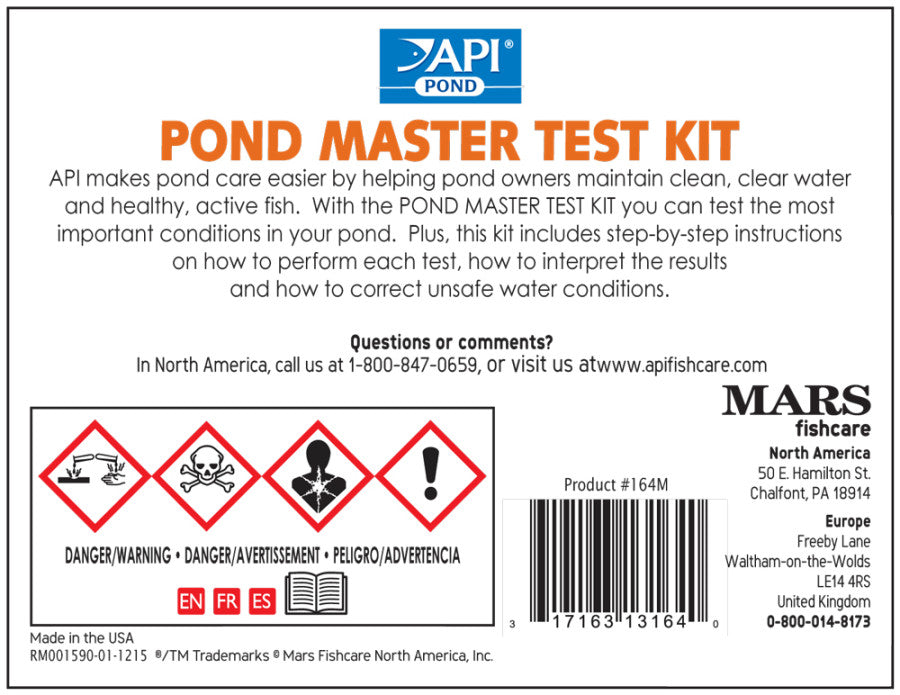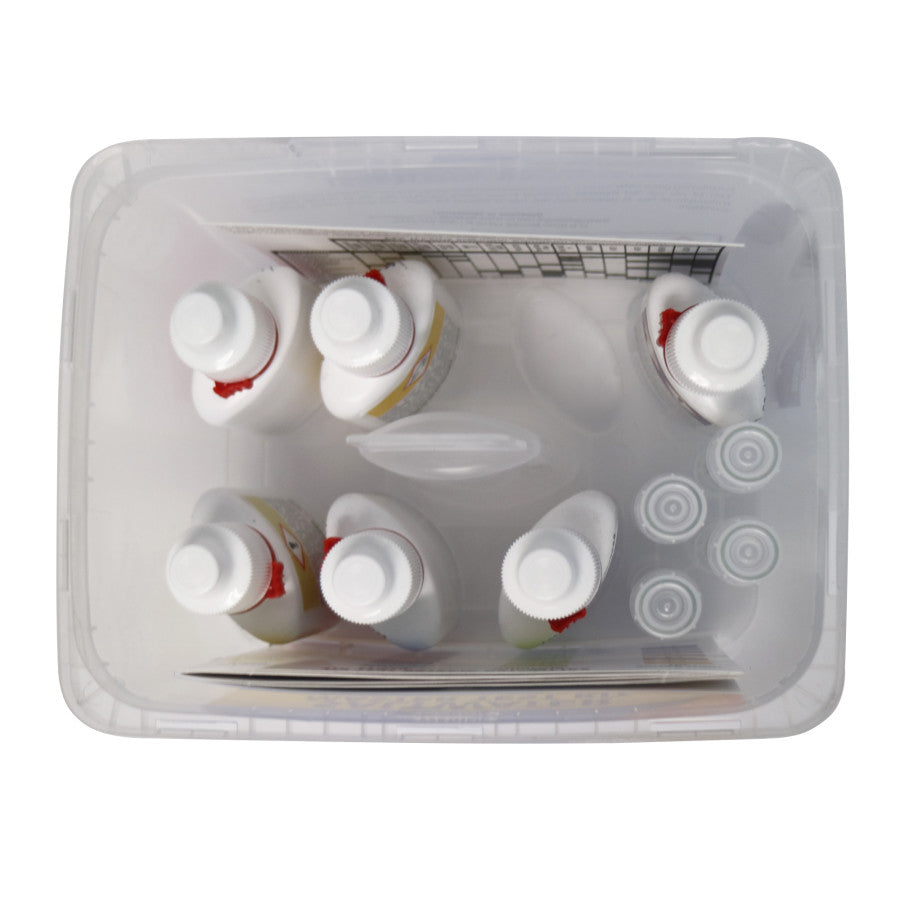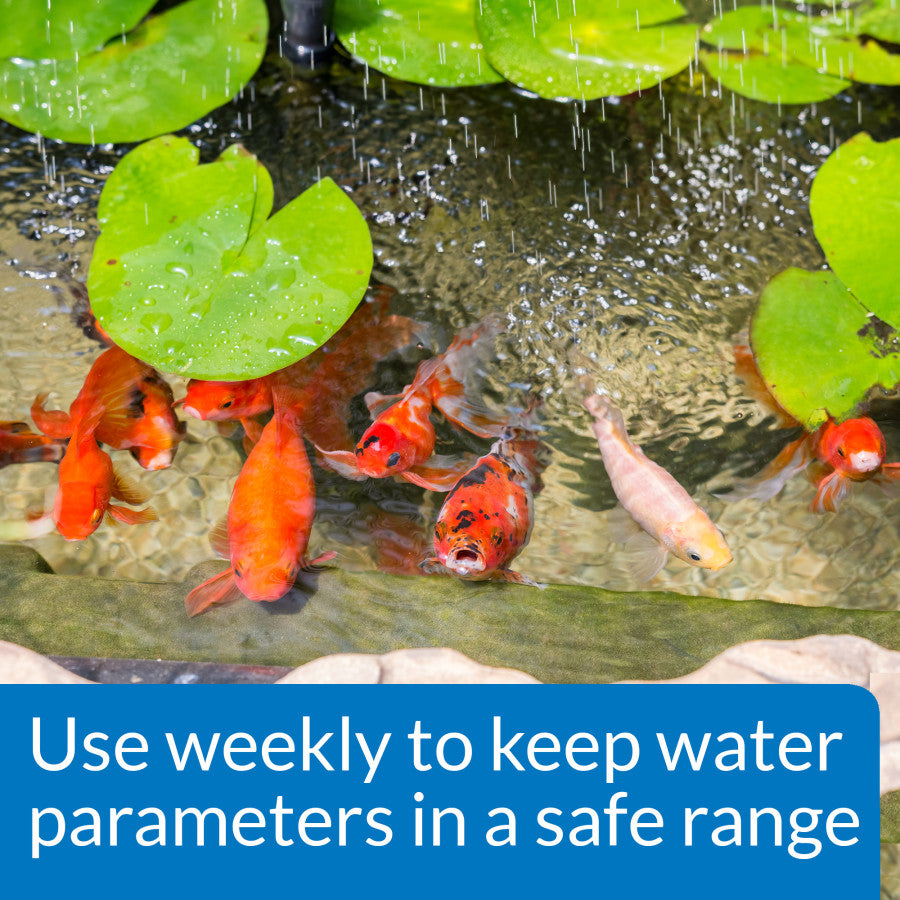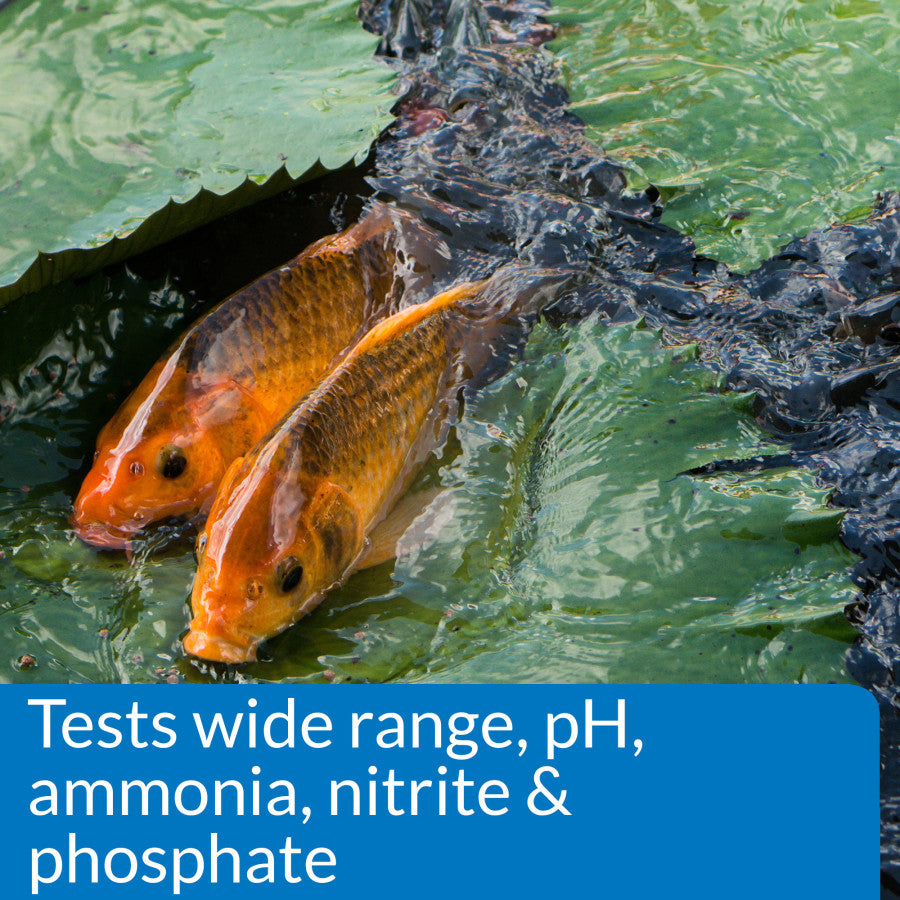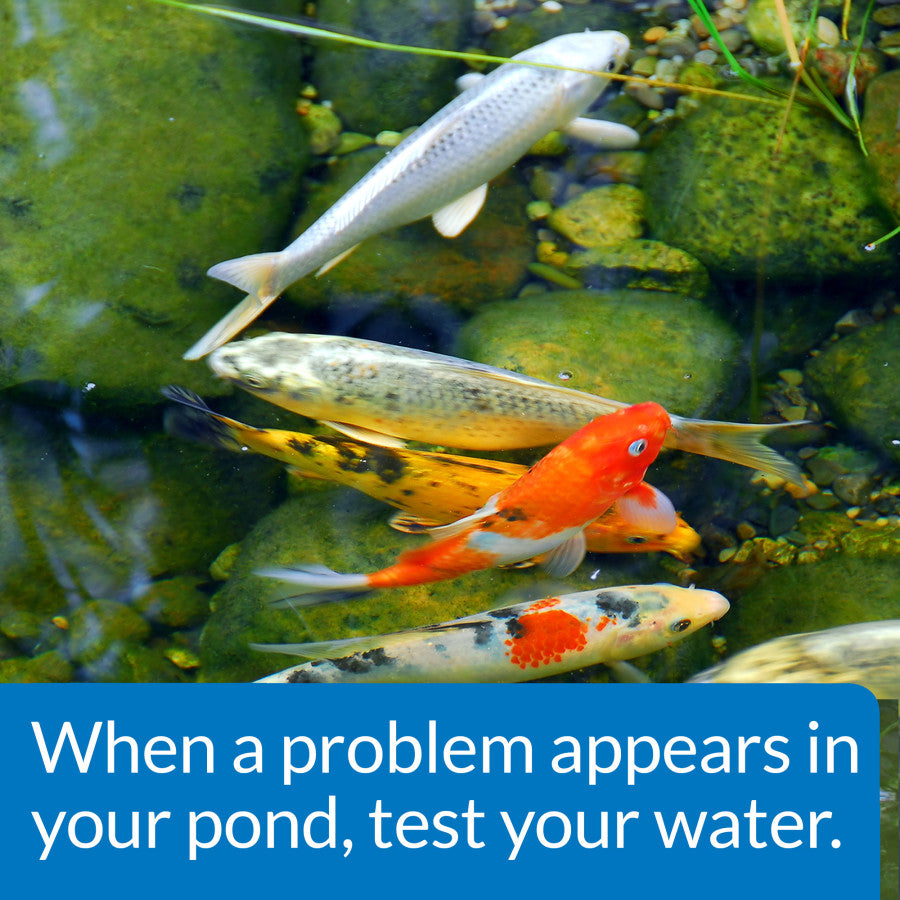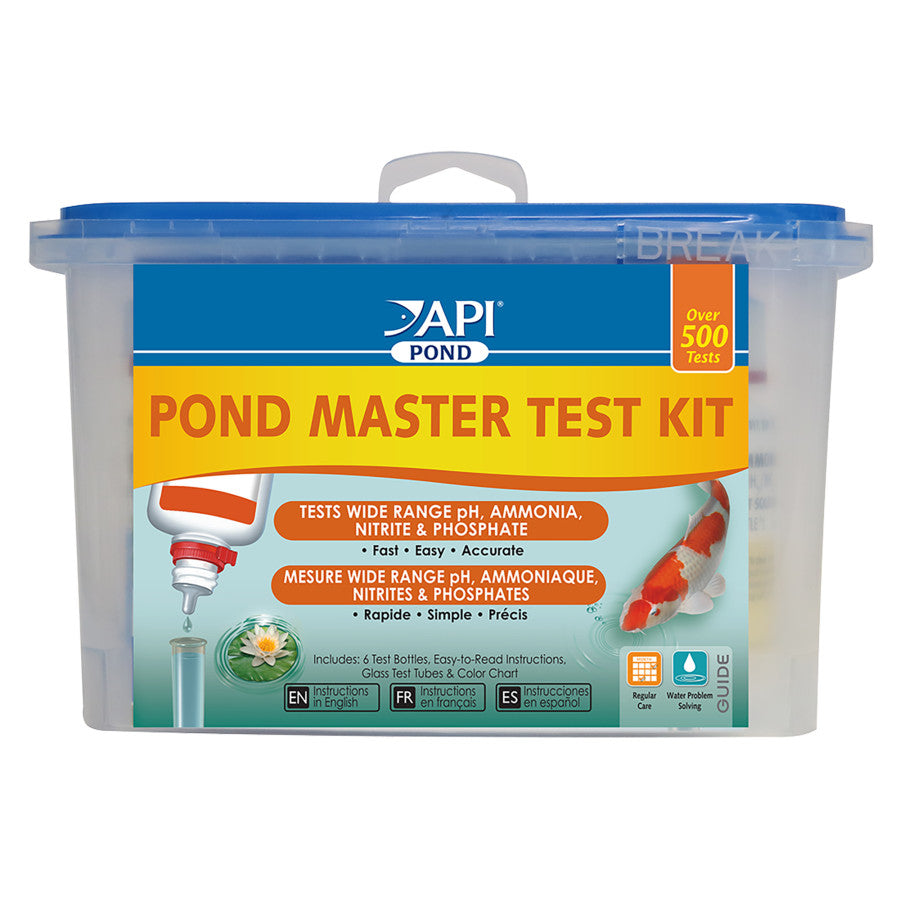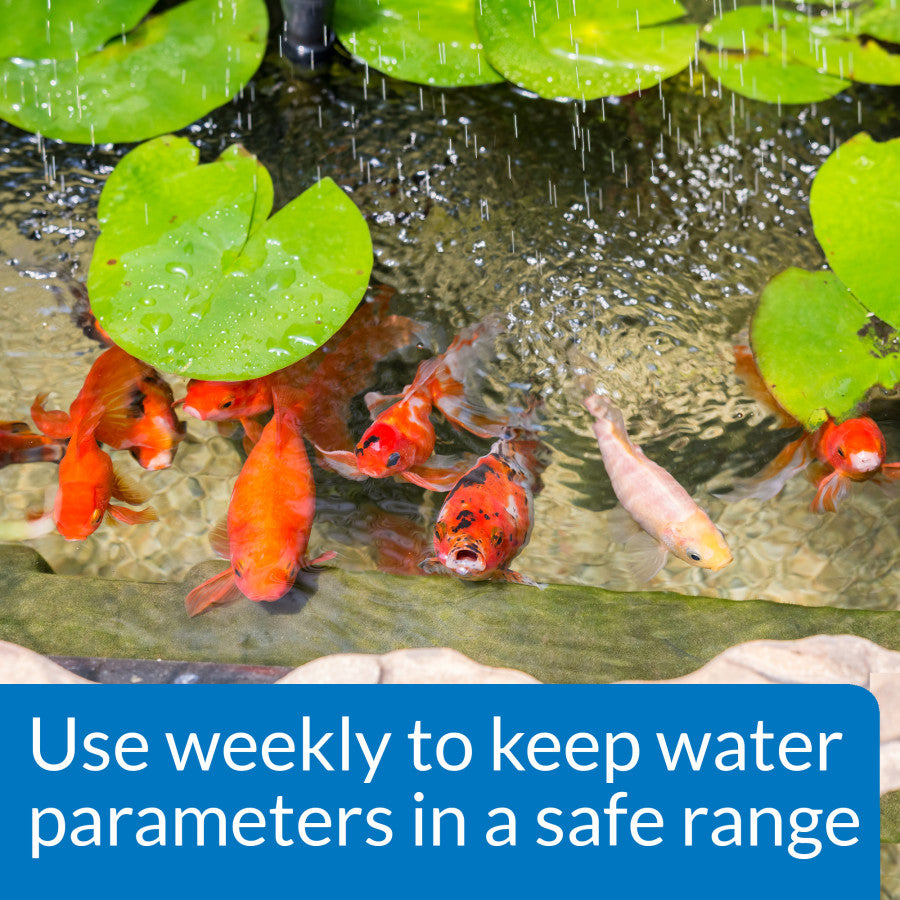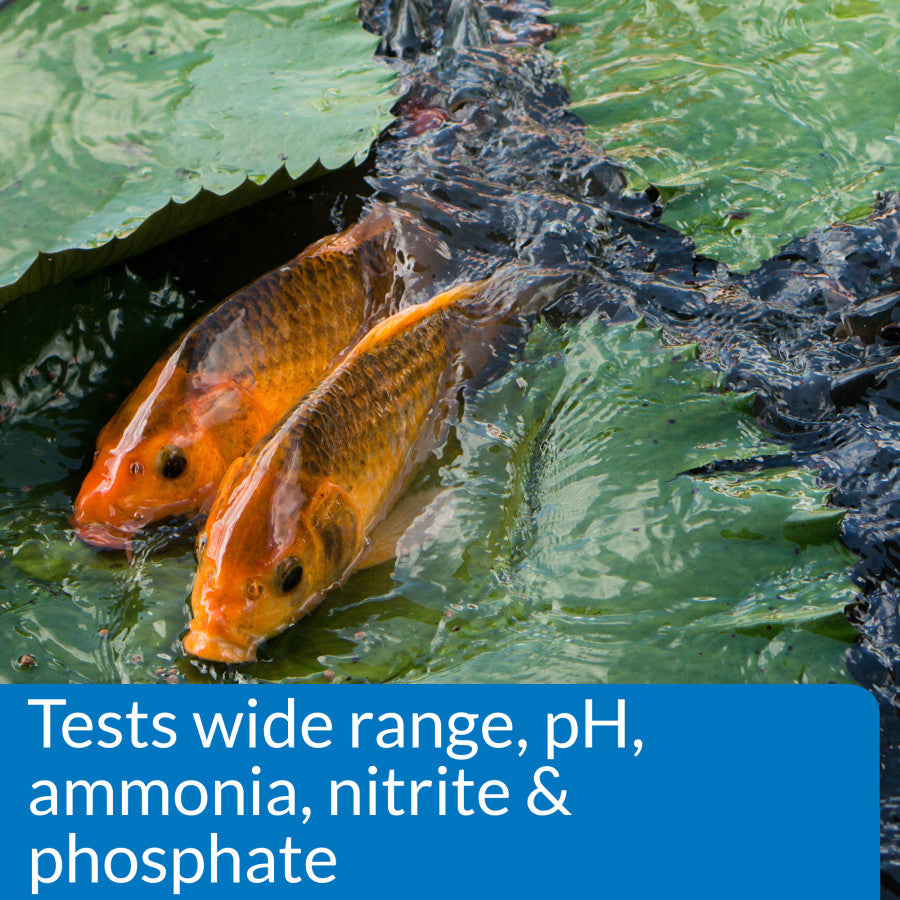MARS FISHCARE NORTH AMERICA
API Pond Master Test Kit
SKU: PT01040131641ea/500 Tests
Couldn't load pickup availability
The API POND MASTER TEST KIT Pond Water Test Kit provides everything you need for regular testing of your pond water or even tap water. This complete pond test kit measures the most important levels, including pH, ammonia, nitrite and phosphate to maintain ideal water condition. Inside the kit you’ll find six bottles of liquid test solutions, several laminated color-matching charts, four glass test tubes with snap-tight caps, a holding tray and an easy-to-follow instruction booklet. Simply gather your samples, add the correct test solution and compare the color with the corresponding color chart to determine each level. This pond kit contains enough water testing supplies for over 500 tests. With API POND products, it’s easy to keep a beautiful pond. For almost 60 years API has developed premium solutions with proven and effective results for your family and ours. API offers a range of testing kits, water conditioners, and nutritionally superior food, because we’re dedicated to making a better underwater world. They work to provide a safe, hospitable environment for fish such as koi, catfish, perch, goldfish and more. At API, we understand the rewards and relaxation of fishkeeping because we have a passion for fish too.
- Helps monitor water quality and prevent invisible water problems that can be harmful to fish
- Measures ornamental pond pH balance, Ammonia content, Nitrite levels and Phosphate content
- Contains six test bottles, instructions, glass test tubes and color charts for 500+ tests
- Use weekly for monitoring and when water or fish problems appear
- Contains one (1) API POND MASTER TEST KIT Pond Water Test Kit 500-Test, including 6 bottles of testing solution, 3 color cards and 4 glass test tubes with cap
Dimension
Dimension
- Product Gross Weight: 0.9690 lb
- Product Net Weight: 0.9690 lb
- Product Height: 4.00 in
- Product Length: 5.75 in
- Product Width: 7.00 in
Instruction
Instruction
- Use Instructions: Directions for Testing pH:1. Fill a clean test tube with 5 ml of pond water to the Line on the tube2. Add 5 drops of Wide Range Test Solution, holding dropper bottle upside down in a completely vertical position to assure uniformity of drops3. Cap the test tube and invert tube to mix solution. Do not hold finger over open end of tube as this may affect the pH of the test solution.4. Determine the pH by complying the color of the solution with those on the pH color chart on back of booklet. The tube should be viewed against the white background in o well-it urea.Directions for Testing Ammonia:1. Fill a clean test tube with 5 ml of water to be tested (to the line on the tube)2. Add 8 drops from Ammonia Test Solution Sole #1, holding the dropper bottle upside down in a completely vertical position to assure uniformity of drops3. Add 8 drops from Ammonia Test Solution Sole #2, holding the dropper bottle upside down in o completely vertical position to assure uniformity of drops4. Cap the test tube and shake vigorously for 5 seconds. Do not hold finger over the open end of the tube, oz. this may affect the test results.5. Wait 5 minutes for the color to develop6. Determine the ammonia level by comparing the color of the solution with those on the ammonia color chart on bock of booklet. The tube should be viewed against the white background in o well it area.Directions for Testing Nitrite:1. Fill a clean test tube with 5 ml of pond water (to the line on the tube)2. Add 5 drops of Nitrite Test solution holding dropper bottle upside down in a completely vertical position to assure uniformity of drops.3. Cap the test tube and shake well for 5 seconds. Do not hold finger over open end of tube oz. this may affect the test results.4. Wait 5 minutes for the cast to develop5. Determine the nitrite level by comparing the color of the solution with those on the nitrite color chart on bock of booklet. The tube should be viewed against the white background in a well it area.Directions for Testing Phosphate:1. Fill a clean test tube with 5 ml of water to be tested to line on the tube2. Holding the bottle vertically add 6 drops from Phosphate Test Solution Bottle *1 Cap the test tube and shake vigorously to 5 seconds3. Now holding the outlet vertically. add 6 drops from Phosphate Test Solution on Bottle * 2. Note: Bottle #2 contains a very thick solution and may require increased pressure to release drops.4. Cap and shake the test tube vigorously for 5 seconds5. Wait 3 minutes for the color to develop6. Determine the phosphate level by comparing the color of the solution with those on the phosphate color chart on bock of booklet. The tube should be viewed against the white background in a went area.
- Storage Instructions: Store in original containers. Keep containers securely sealed. No smoking, naked lights or ignition sources. Store in a cool, dry, well-ventilated area. Store away from incompatible materials and foodstuff containers. Protect containers against physical damage and check regularly for leaks.
Safety
Safety
- Caution: Keep out of reach of children
- First Aid Measures: Eye Contact: If this product comes in contact with the eyes: Wash out immediately with fresh running water. Ensure complete irrigation of the eye by keeping eyelids apart and away from eye and moving the eyelids by occasionally lifting the upper and lower lids. Seek medical attention without delay, if pain persists or recurs seek medical attention. Removal of contact lenses after an eye injury should only be undertaken by skilled personnel.Skin Contact: If skin contact occurs: Immediately remove all contaminated clothing, including footwear. Flush skin and hair with running water (and soap if available). Seek medical attention in event of irritation.Inhalation: If fumes or combustion products are inhaled remove from contaminated area. Lay patient down. Keep warm and rested. Prostheses such as false teeth, which may block airway, should be removed, where possible, prior to initiating first aid procedures. Apply artificial respiration if not breathing, preferably with a demand valve resuscitator, bag-valve mask device, or pocket mask as trained. Perform CPR if necessary. Transport to hospital, or doctor.Ingestion: If Swallowed, refer or medical attention, where possible without delay. For advice, contact a Poisons Information Centre or a doctor. Urgent hospital treatment is likely to be needed. In the mean time, qualified first-aid personnel should treat the patient following observation and employing supportive measures as indicated by the patient's condition. If the services of a medical officer or medical doctor are readily available, the patient should be placed in his/her care and a copy of the SDS should be provided. Further action will be the responsibility of the medical specialist. If medical attention is not available on the worksite or surroundings send the patient to a hospital together with a copy of the SDS.
